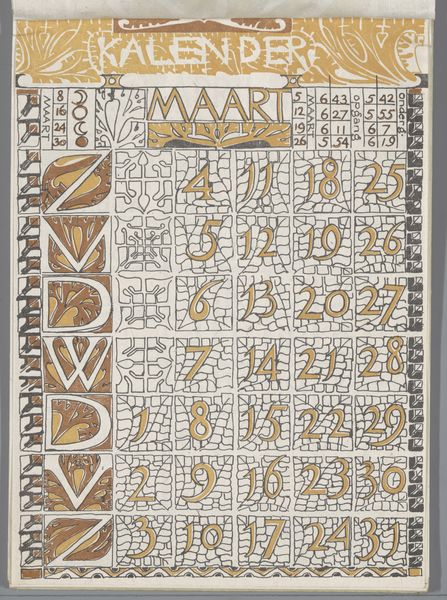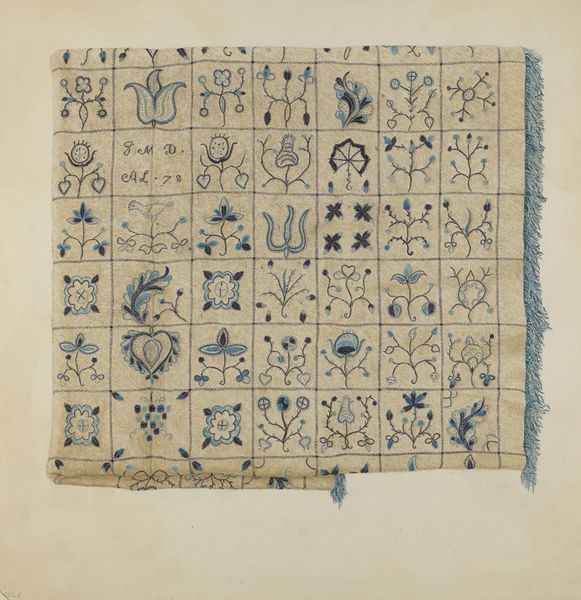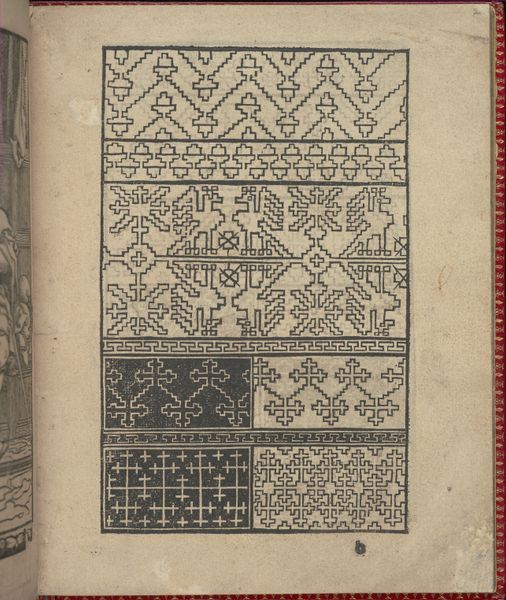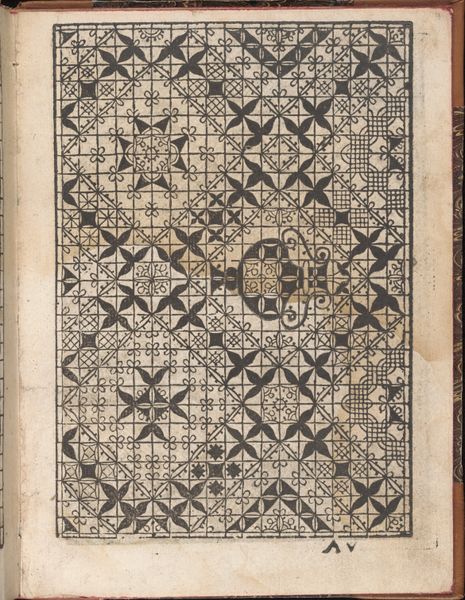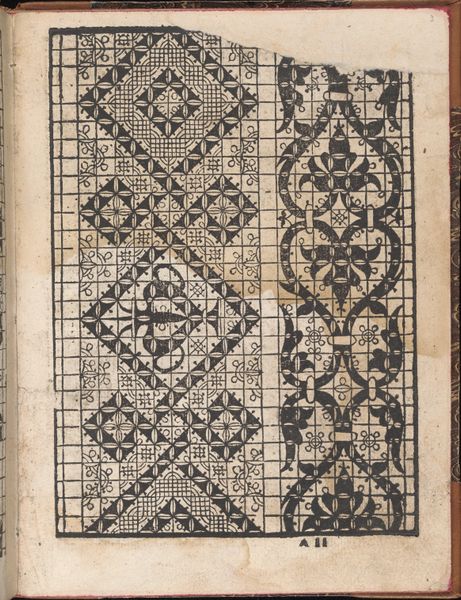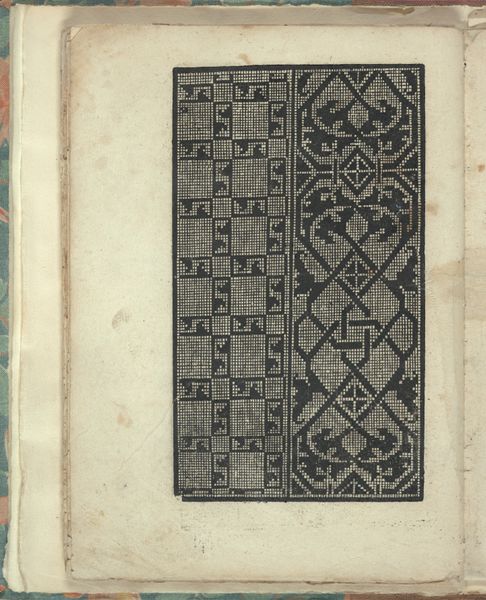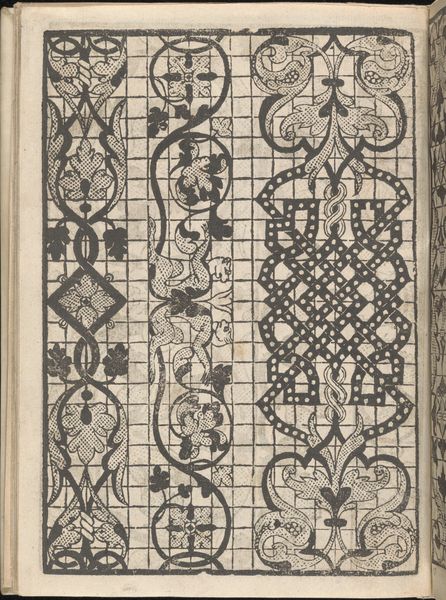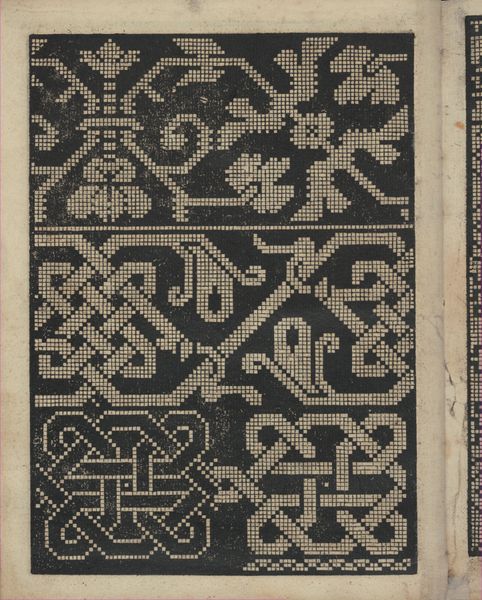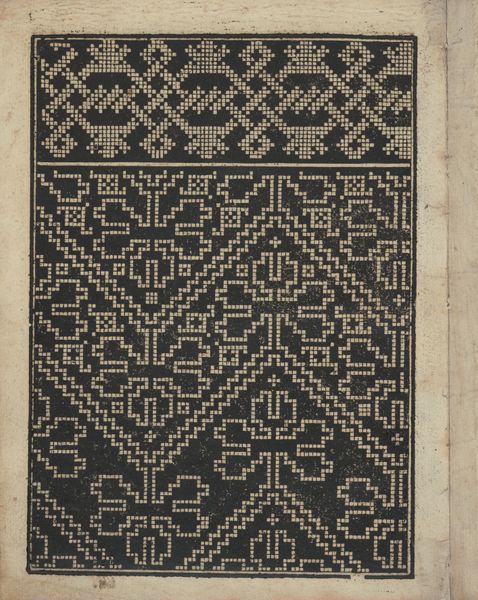
graphic-art, print, paper, typography, poster
#
pattern heavy
#
graphic-art
#
natural stone pattern
#
art-nouveau
# print
#
paper
#
typography
#
repetitive shape and pattern
#
geometric
#
fabric design
#
repetition of pattern
#
vertical pattern
#
pattern repetition
#
textile design
#
decorative-art
#
imprinted textile
#
layered pattern
#
poster
Dimensions: height 277 mm, width 176 mm, height 245 mm, width 176 mm
Copyright: Rijks Museum: Open Domain
Carel Adolph Lion Cachet created this calendar for the year 1900, using pen and brush in brown ink and watercolour. The design is dominated by a grid of squares, each containing a date interwoven with stylized floral motifs. The limited palette evokes a sense of warmth and nostalgia. The structure of the calendar reflects the artistic currents of the time, particularly the Art Nouveau movement, with its emphasis on organic forms and decorative patterns. We see how Cachet merges functionality with aesthetic expression by embedding dates within a tableau of botanical designs, destabilizing the distinction between the practical and the ornamental. The structural arrangement of the calendar, reminiscent of a medieval illuminated manuscript, creates a semiotic relationship between time and nature. Consider how Cachet challenges fixed meanings and categories. The repetitive use of patterns and motifs, coupled with the grid layout, creates a tension between order and chaos, control and freedom. This tension invites us to contemplate how we perceive and structure time itself, and to understand that art does not have one meaning, but is continually re-interpreted.
Comments
No comments
Be the first to comment and join the conversation on the ultimate creative platform.
